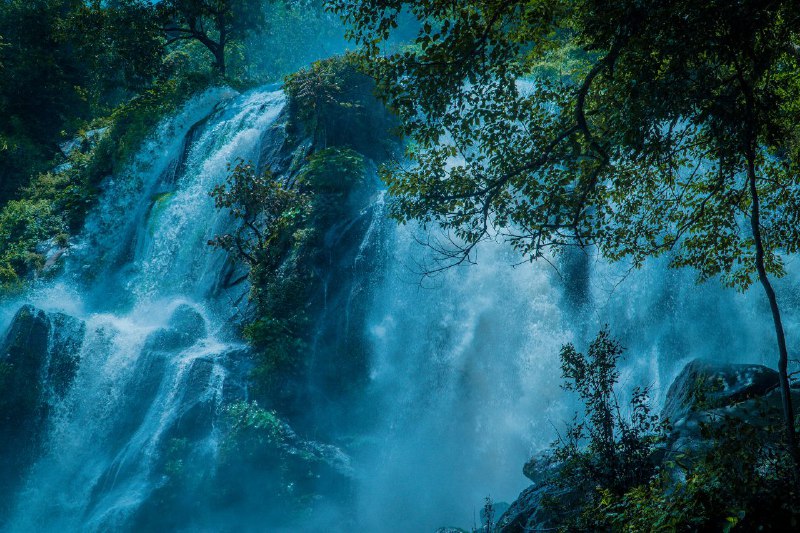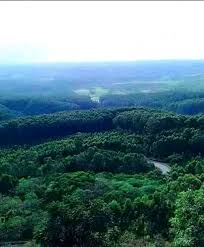Illubabor, a land of unimaginable beauty that is unknown, underdeveloped
Illubabor Zone is one of the 22 Zones of Oromia and remains with undiscovered natural beauty and unrecognized historical and cultural heritage.

Iluababor Branch districts

Yayo District
The Yayu coffee forest biosphere reserve is in the Illubabor Zone of Oromiya Regional State, in the south-western part of Ethiopia. The area is drained by small rivers like Geba, Dogi, Saki and Sese, which discharge into the Baro River which is one of the major tributaries of the river Nile. The biosphere reserve contains landscape elements of regional, national and international importance. The most important landscapes are forest, agricultural land, wetland, and grazing land.
The biosphere reserve includes Eastern Afromontane Biodiversity Hotspot and Important Bird Areas of international significance. The area is also of cultural and historical significance since it possesses many archaeological sites, ritual sites, caves and waterfalls.
Yayo District Manager

Gebra Dima District
The Yayu coffee forest biosphere reserve is in the Illubabor Zone of Oromiya Regional State, in the south-western part of Ethiopia. The area is drained by small rivers like Geba, Dogi, Saki and Sese, which discharge into the Baro River which is one of the major tributaries of the river Nile. The biosphere reserve contains landscape elements of regional, national and international importance. The most important landscapes are forest, agricultural land, wetland, and grazing land.
The biosphere reserve includes Eastern Afromontane Biodiversity Hotspot and Important Bird Areas of international significance. The area is also of cultural and historical significance since it possesses many archaeological sites, ritual sites, caves and waterfalls.
Gebra Dima District Manager

Geba Dhidhesa District
The Yayu coffee forest biosphere reserve is in the Illubabor Zone of Oromiya Regional State, in the south-western part of Ethiopia. The area is drained by small rivers like Geba, Dogi, Saki and Sese, which discharge into the Baro River which is one of the major tributaries of the river Nile. The biosphere reserve contains landscape elements of regional, national and international importance. The most important landscapes are forest, agricultural land, wetland, and grazing land.
The biosphere reserve includes Eastern Afromontane Biodiversity Hotspot and Important Bird Areas of international significance. The area is also of cultural and historical significance since it possesses many archaeological sites, ritual sites, caves and waterfalls.
Geba Dhidhesa District Manager

Nono Sal'e District
The Yayu coffee forest biosphere reserve is in the Illubabor Zone of Oromiya Regional State, in the south-western part of Ethiopia. The area is drained by small rivers like Geba, Dogi, Saki and Sese, which discharge into the Baro River which is one of the major tributaries of the river Nile. The biosphere reserve contains landscape elements of regional, national and international importance. The most important landscapes are forest, agricultural land, wetland, and grazing land.
The biosphere reserve includes Eastern Afromontane Biodiversity Hotspot and Important Bird Areas of international significance. The area is also of cultural and historical significance since it possesses many archaeological sites, ritual sites, caves and waterfalls.
Nono Sal'e District Manager

Sibo Toli Kobo District
The Yayu coffee forest biosphere reserve is in the Illubabor Zone of Oromiya Regional State, in the south-western part of Ethiopia. The area is drained by small rivers like Geba, Dogi, Saki and Sese, which discharge into the Baro River which is one of the major tributaries of the river Nile. The biosphere reserve contains landscape elements of regional, national and international importance. The most important landscapes are forest, agricultural land, wetland, and grazing land.
The biosphere reserve includes Eastern Afromontane Biodiversity Hotspot and Important Bird Areas of international significance. The area is also of cultural and historical significance since it possesses many archaeological sites, ritual sites, caves and waterfalls.
